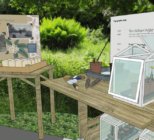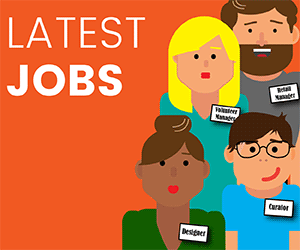Under the National Lottery Heritage Fund’s New Strategic Framework, every project must now achieve the outcome ‘a wider range of people will be involved with heritage.’ Tricolor’s newest Director, Janina McBride, reflects on her top 10 take away points from their Inclusion guidance:
1. Everyone should have the opportunity to benefit from National Lottery funding.
Under the newly launched strategic framework, this inclusion outcome is the only mandatory outcome organisations need to achieve in their project. It recognises that people with protected characteristics (recognised under the Equality Act including sexuality, sex, gender, religion, disability, ethnicity and age), as well as people from lower socio-economic backgrounds, can regularly experience barriers. They are generally under-represented as visitors, participants, volunteers and in the workforce.
2. Accept that we live in an unequal society, with unequal access to heritage, and commit to doing something about it.
We can all do better; whether truly consulting potential audiences, providing training for staff and volunteers, prioritising accessible toilet facilities, or paying staff the living wage.
The scale of the work you need to do will depend on the size of the grant requested, but the principles remain good practice for any organisation. For grants over £250K, you will need to deliver audience development work as part of your Activity Plan.
No matter the size of your project, however, there is always something you can do to remove or minimise disadvantages.
3. Consider inclusion from the top to bottom of your organisation.
Before launching your project, can you review your organisation’s vision, values, decision-making processes, and equality and diversity policies? How diverse are your leaders, those employed or who volunteer for you? Can you look at your methods of recruitment, and consider directly approaching communities you are trying to reach? When was the last time you provided equality and diversity training for your organisation and did everyone take part?
4. Start by fully understanding your current audience demographic and how this compares to your local or regional area so you can identify gaps.
You will need to start by establishing who you currently reach. Do you have a genuine understanding of the current profile of your visitor? Can you get staff, volunteers or an external consultant to conduct surveys for you? Collecting baseline data about the demographics of your organisation and audiences is important. You can then measure changes as you progress with and complete your project.
Compare the current visitor profile with the demographics of your local and regional area; the Office of National Statistics and Local Council websites are a good place to start. What gaps do you have? You can consider audience segments in terms of demographics. However, it is important to consider that individuals have multiple identifiers, for example, a disabled mother on a low income.
There are segmentation tools that you can use to help drill down into audience attitudes and motivation. For a fee, the Audience Agency’s Audience Spectrum can provide a report to help you profile and map your audiences across their 10 profiles.
https://www.theaudienceagency.org/audience-spectrum
5. Take your time, be collaborative and willing to share power.
Once you have identified who your under-represented groups are, you need to work out why they are not engaging with you. Research existing partnerships, contacts and networks that already exist in your area that may work with these groups. Build relationships with these stakeholders and communities.
Have you built in enough time to develop trusting relationships within your organisation and with stakeholders and communities? Be prepared and willing to share power; can you allow these groups to have ownership over decision making on your project?
6. It is physical and attitudinal barriers in society that ‘disable’ people.
Use the social model of disability when considering involving disabled people. It states that disability is caused by the way society is organised, rather than by a person’s difference or impairment. Society creates ‘barriers’ that prevent people from engaging fully and on an equal basis, and these must be understood and removed.
Consult with national, regional or local groups to fully identify barriers. If considering physical barriers, you may want to appoint a registered access consultant to support you with planning your scheme. Sensory and intellectual access is also important to consider, for example, providing large print guides for exhibitions, or offering translated text.
7. Economic barriers are not just limited to entry charges.
You may need to charge for your attraction or activities, but these costs can be prohibitive. Could you offer free entry in exchange for volunteering, or a discount, or free days for local people on certain times or days?
Have you considered travel or subsistence expenses for volunteers or offering creche facilities for young mothers? All of these activities can support genuine inclusion and increase meaningful access.
8. It is your responsibility to make people feel welcome.
People will often have made a decision on whether or not to visit you before leaving the house. Publicity and your website (if you have one) needs to convey a friendly, welcoming image of your organisation. Do you need to improve your marketing and website? Does your website include information about disability access and other adaptions, for example, if you have changing places or gender-neutral toilets?
Do your staff and volunteers who have contact with the public need training to remind them that they are there to help welcome all members of the public? Do your front of house staff and volunteers demographic reflect your local or regional area?
Does the interpretation provide a full range of stories and experiences? Can you allow communities ownership of how their stories are told?
9. Working with children, young or vulnerable people, needs extra thought and resource.
You must consider your legal obligations when working with children, young or vulnerable adults. You should have suitable safeguarding policies and practices in place.
Staff and volunteers responsible for supporting vulnerable participants need training, supervision and support. If you cannot correctly support these vulnerable groups, then you should not include them as part of your project.
10. Without an appropriate budget, your inclusion proposals may be unrealistic and undeliverable.
It is vitally important to consider an appropriate budget to cover your inclusive work. You should also build in a contingency to cover things that may arise following consultation.
Ensure you pay at least the National Living Wage (or London Living Wage), for any paid roles. Consider whether you can offer vouchers, free entry or shop and cafe discounts as a ‘thank you’ to volunteers or consultees. Is transport required? Consider whether to provide refreshments at events and have you checked if these are appropriate? Are there any cultural or religious sensitivities to consider?
If would like a free advice on preparing a bid to the National Lottery Heritage Fund, visit tricolorassociates.co.uk or email [email protected] you can also find more information on our M+H Advisor Directory Page here










